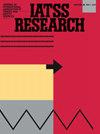Pedestrian gap acceptance behavior at unsignalized mid-block crossing under mixed traffic conditions
IF 3.3
Q3 TRANSPORTATION
引用次数: 0
Abstract
In Thailand, 68 % of pedestrian crashes on national highways in 2021 occurred when they were crossing the road. Pedestrians may encounter difficulties when deciding on the minimum safe gap to cross the road under diverse conditions, especially when the approaching vehicle sizes are different. Pedestrian safety is a crucial concern. This study analyzed the critical gap and dilemma zone for pedestrians crossing unsignalized mid-block crosswalks in Bangkok, Thailand, utilizing Raff's and logit methods. Multiple linear regression and binary logit regression models were developed to identify the factors affecting accepted gap size and gap acceptance behavior. Findings indicated that critical gaps and dilemma zones differed between two-lane and four-lane road sections, while the type of approaching vehicle had the strongest effect on accepted gap size. Pedestrians tended to accept smaller gaps when the approaching vehicle was a motorcycle. Several factors including yielding behavior, waiting time, age, crossing speed of pedestrians, and vehicle speed significantly influenced gap acceptance.
混合交通条件下无信号中路人行横道行人缺口接受行为研究
在泰国,2021年国家公路上68%的行人撞车事故发生在他们过马路的时候。行人在不同的情况下,特别是在驶近的车辆大小不同的情况下,在决定过马路的最小安全距离时,可能会遇到困难。行人安全是一个至关重要的问题。本研究利用Raff和logit方法,分析了泰国曼谷无信号街区中间人行横道的行人临界间隙和两难区。建立多元线性回归和二元logit回归模型,确定影响可接受间隙大小和间隙接受行为的因素。结果表明,两车道和四车道路段的临界间隙和两难区存在差异,而接近车辆类型对可接受间隙大小的影响最大。当接近的车辆是摩托车时,行人倾向于接受较小的间隙。退让行为、等待时间、年龄、行人过马路速度、车速等因素对间隙接受度有显著影响。
本文章由计算机程序翻译,如有差异,请以英文原文为准。
求助全文
约1分钟内获得全文
求助全文
来源期刊

IATSS Research
TRANSPORTATION-
CiteScore
6.40
自引率
6.20%
发文量
44
审稿时长
42 weeks
期刊介绍:
First published in 1977 as an international journal sponsored by the International Association of Traffic and Safety Sciences, IATSS Research has contributed to the dissemination of interdisciplinary wisdom on ideal mobility, particularly in Asia. IATSS Research is an international refereed journal providing a platform for the exchange of scientific findings on transportation and safety across a wide range of academic fields, with particular emphasis on the links between scientific findings and practice in society and cultural contexts. IATSS Research welcomes submission of original research articles and reviews that satisfy the following conditions: 1.Relevant to transportation and safety, and the multiple impacts of transportation systems on security, human health, and the environment. 2.Contains important policy and practical implications based on scientific evidence in the applicable academic field. In addition to welcoming general submissions, IATSS Research occasionally plans and publishes special feature sections and special issues composed of invited articles addressing specific topics.
 求助内容:
求助内容: 应助结果提醒方式:
应助结果提醒方式:


